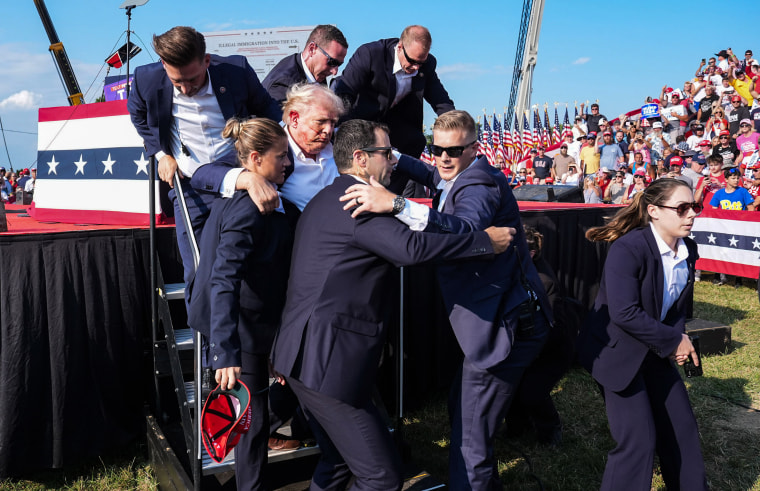The gunman who tried to assassinate former President Donald Trump may have had a firearm with a collapsible stock, making it easier for him to carry and conceal the weapon, the director of the FBI testified Wednesday.
The gunman also had researched President John F. Kennedy’s assassination, FBI Director Christopher Wray said.
On July 5, Thomas Crooks, 20, traveled to the site of Trump’s July 13 presidential campaign rally in Butler, Pennsylvania, for the first time, Wray told a House Judiciary Committee hearing.
The next day, Crooks searched “how far away was Oswald from Kennedy,” referring to the 1963 assassination, and registered for the rally, Wray said.
Wray’s testimony has offered the most clear timeline of Crooks’ activities on the day of the shooting and in the days leading up to it, showing his preparation and highlighting how Crooks evaded law enforcement.
On the morning of the rally, he went back to the campaign site, where he stayed for about an hour, and then left to purchase 50 rounds of ammunition that afternoon.

Wray said Crooks was back at the rally site shortly before 4 p.m., when he flew a drone about 200 yards away from the main stage area, Wray said.
Two hours later, witnesses began to shout about a suspicious man on the roof of a nearby building.
Wray said Crooks may have had a collapsible stock, which would explain why witnesses did not see Crooks walking around with a weapon beforehand and why the firearm was not spotted until Crooks was already on the roof.
Crooks began firing at least eight gunshots seconds after he noticed a local law enforcement officer on the ground had spotted him, Wray said.
The officer had gotten a boost from a colleague and pulled his head up over the roof. Crooks pointed his gun at the officer, causing him to fall, and then started shooting in Trump’s direction, Wray said.
The FBI director’s testimony comes amid frustrations from lawmakers that key questions have remained unanswered, particularly by Kimberly Cheatle, who resigned as director of the Secret Service on Tuesday after Republicans accused her of failing to fully cooperate with the House Oversight Committee in testimony the day before.
“We need to know play-by-play, moment-by-moment, second-by-second,” Rep. Jim Jordan, R-Ohio, told Wray on Wednesday at the start of the hearing.
Wray said the FBI recovered the drone in Crooks’ car, where they also found a drone controller and two explosive devices that could be remotely detonated.

Crooks had a transmitter on him, the director said, adding that it appears the remote detonation “would not have worked.”
Eight bullet cartridges were found on the roof with the gunman’s body, he said.
Wray said Crooks had purchased a ladder, about 5-foot tall, according to a bloodied receipt that he had on him, but the ladder was not found at the scene. The FBI director said it is unclear how Crooks got onto the roof.
Crooks was a “fairly avid shooting hobbyist,” who went to a shooting range the day before the assassination attempt, “probably” with the same AR-style rifle he used at the rally, Wray said.
The congressional committee hearings this week have begun to yield more information on the shooting.
On Tuesday, Pennsylvania State Police Col. Christopher Paris told the House Homeland Security Committee that officers with the Butler County Emergency Services Unit had spotted Crooks from a second-story window and left their post to search for him.
Paris said Crooks was identified as suspicious before the shooting because he was hanging around but never attempted to enter the rally. That suspicion was later heightened, Paris said, when Crooks was seen with a rangefinder.
That day, three other people had been identified as suspicious, the state police commissioner said.
Crooks was not designated as an actual threat until seconds before he opened fire, Paris said. Trump was shot in the ear, one rallygoer was killed and two others were wounded.




